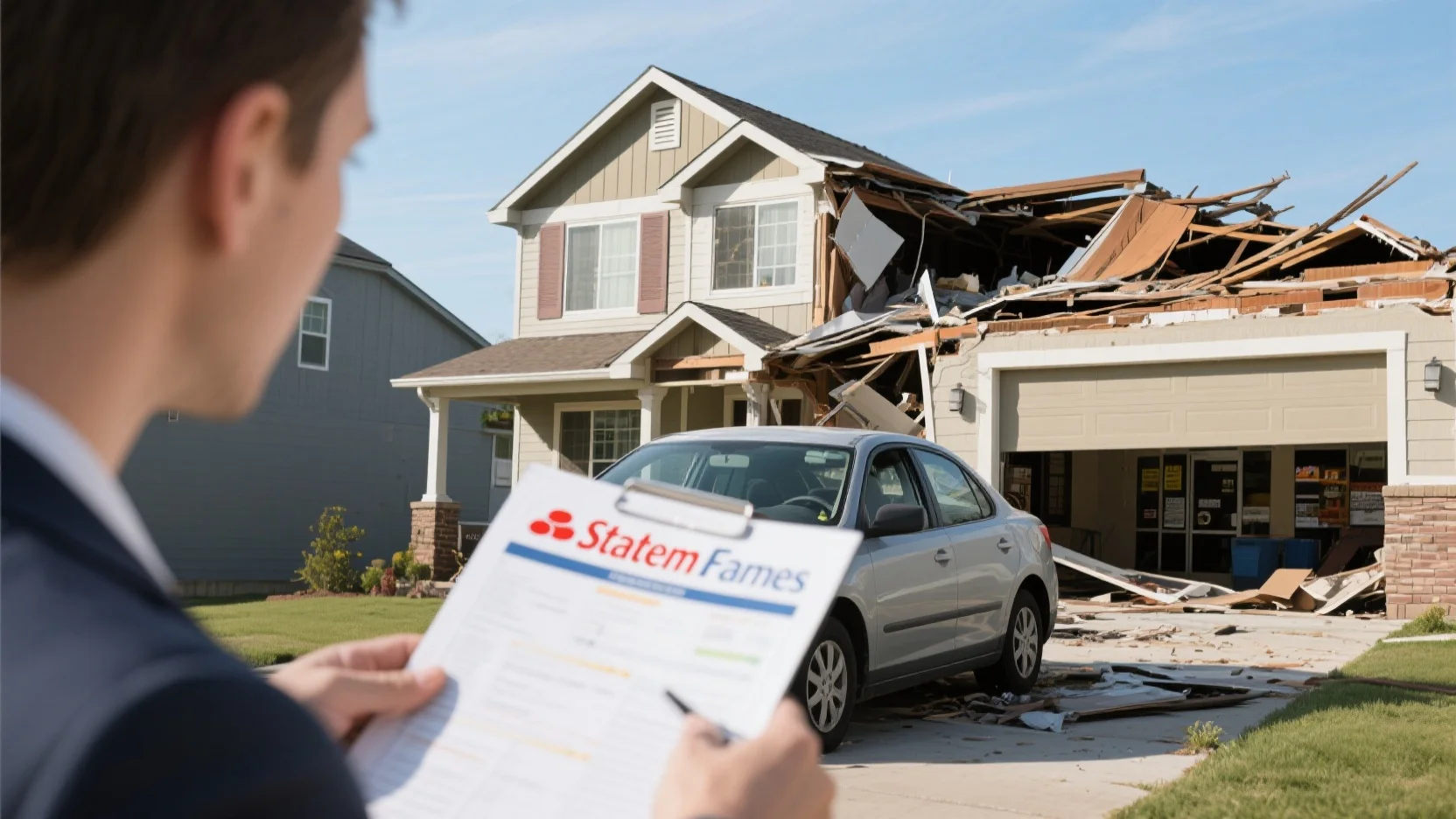
When life throws you an unexpected curveball—a fender bender, property damage, or an unforeseen event at your business—knowing how to file an insurance claim can ease the stress. State Farm, a trusted name in insurance for homeowners, drivers, and small business owners, is here to help you get back on your feet with a simple and transparent claims process.
Whether you’ve experienced an auto accident, storm damage, or a mishap in your business, this step-by-step guide will walk you through everything you need to know about filing a claim with State Farm.
Understanding the Claims Process
Before you begin, it’s important to familiarize yourself with the basics of State Farm’s claims process. Insurance claims can feel overwhelming, but when you understand the steps involved, it becomes much easier to handle.
Know Your Policy Coverage
Different policies cover different types of incidents. For instance:
- Auto Insurance may cover accidents, theft, and weather-related damage.
- Homeowners Insurance often applies to damage caused by fire, storms, or vandalism.
- Business Insurance provides coverage for liability issues, property damage, and employee-related incidents.
Take the time to review your policy details. Having a clear understanding of your coverage will help you streamline your claim and avoid surprises during the process.
Preparing to File a Claim
Preparation is key to a smooth claims process. Here’s what you should do before reaching out to State Farm.
Gather Essential Information
Before filing a claim, collect these important details:
- Your State Farm policy number
- A description of the event or damage
- Photos or videos of the damage (if applicable)
- Receipts or invoices for damaged items
- Contact information for any involved parties or witnesses
Auto Claims? Take These Steps at the Scene
If you’re filing an auto insurance claim following an accident:
- Ensure Safety First: Move to a safe location and check for injuries. Call emergency services if necessary.
- Document the Scene: Take photos of the vehicles, license plates, and any visible damage.
- Exchange Information: Collect contact and insurance details from other drivers involved.
- File a Police Report: For accidents involving significant damage or injury, a police report may be required.
Having all this information on hand will make your claim process smoother and faster.
Filing the Claim
State Farm makes filing a claim as straightforward as possible. Here’s your step-by-step guide for submitting a claim through their various channels.
1. File Online
Visit StateFarm.com and log in to your account. Navigate to the “Claims” section, where you’ll find simple prompts to guide you. Fill in the required details, upload supporting documents, and submit your claim.
2. Use the State Farm Mobile App
Convenient and user-friendly, the State Farm app allows you to file a claim directly from your smartphone. This option is particularly handy for uploading photos or videos of damage in real-time.
3. File Over the Phone
Prefer speaking to someone? Call State Farm’s 24/7 claims line at 1-800-SF-CLAIM (1-800-732-5246). A representative will guide you through the steps and answer any questions.
What Information Do You Need to Provide?
When filing a claim, you’ll typically need to provide:
- Details about the incident (date, time, location)
- A description of the damage or loss
- Documentation, such as photos, receipts, or police reports (if required)
What Happens After You File?
Once you’ve submitted your claim, the real work begins. Here’s what to expect next:
Claim Review Process
A State Farm claims adjuster will review the details of your submission. They may reach out to you for additional information or to schedule an inspection.
Communication from State Farm
State Farm prioritizes keeping you informed every step of the way. You’ll receive updates on your claim’s status through your preferred communication channel—email, phone, or app notifications.
Expect transparent and timely updates about your claim so you’re never left wondering about its progress.
Resolving Your Claim
After filing, the resolution process moves forward. Here’s how it typically unfolds:
Inspection and Appraisal
Depending on the type of claim, a State Farm representative may visit your property, review your vehicle’s damage, or assess losses to determine coverage and costs.
Settlement and Payment
Once your claim is approved:
- State Farm will provide a detailed breakdown of the settlement.
- Payments are often issued quickly, ensuring you can make necessary repairs or replacements without delay.
Keep in mind that policy deductibles will apply—you’ll need to cover this portion of the expenses.
Tips for a Smooth Claims Experience
Filing a claim doesn’t have to be overwhelming. These tips can help ensure the process goes as smoothly as possible while maximizing your benefits.
Be Proactive and Organized
Stay on top of deadlines, respond promptly to requests for additional information, and keep all claim-related documents in one place for easy reference.
Maintain Open Communication
Honest, clear communication with State Farm representatives is key. If you have any questions or concerns, don’t hesitate to ask for clarification.
Leverage State Farm’s Resources
State Farm’s website, mobile app, and 24/7 helpline are rich with tools and information to support you. Using these resources can save time and help you feel more in control of the process.
Take Control of Your Claim Experience with State Farm
Life’s unexpected moments can be stressful, but State Farm is here to help you weather the storm. Whether you’re a homeowner dealing with storm damage, a driver recovering from an accident, or a small business owner managing an unforeseen challenge, their claims process is designed with you in mind.
By following the steps outlined in this guide, you’ll be well-prepared to file a claim and take advantage of the comprehensive coverage State Farm offers.
Need more support? Contact a State Farm agent or explore their webpage for additional resources. Remember, you don’t have to face it alone—State Farm has your back, every step of the way.




